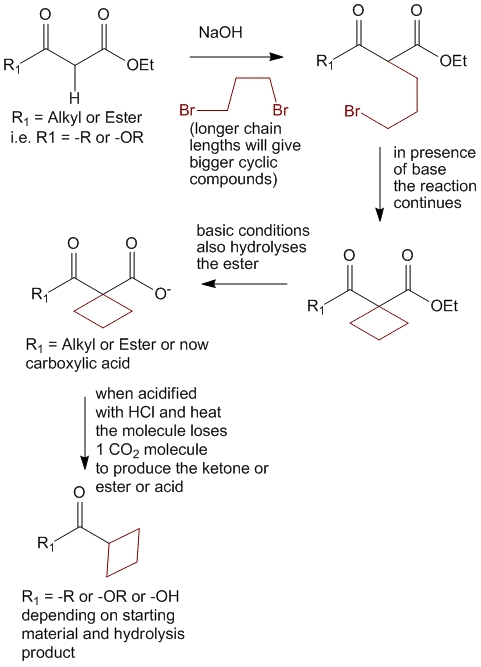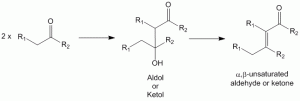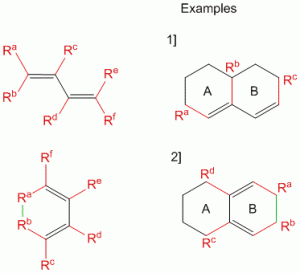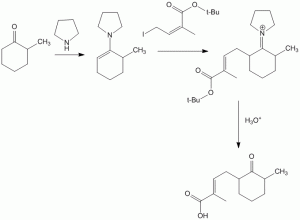As has been discussed previously – acetoacetic ester synthesis and malonic ester synthesis are non-selective, in that, they can produce dialkylated products. This particular property of these reactions can be made use of to synthesize cyclic compounds using a alkyl dihalide. This reaction can be used to even produced highly strained 4-membered rings as is shown below.
Steps:
- In presence of base and alkyl dihalide, the beta-keto ester or malonic ester can react to produce the substituted compound. (note – increasing the alkyl chain length would yield bigger cyclic structures, and R1 can be either alkyl or ester)
- Since base is still present and one of the halides is still present on the product itself, the disubstitution leads to formation of a ring. (note- chances of another alkyl dihalide from reacting with this product is lesser compared to the alkyl halide which is already attached to it).
- Once the cyclic compound is formed the reaction need not stop there – the product can undergo hydrolysis under the basic conditions to yield the acid (at this stage if R1 is also an ester it may undergo hydrolysis).
- Finally acidification with slight heating may promote the compound to lose 1 molecule of carbon dioxide to yield the product.

Books on Organic Chemistry
Check out some of the best textbooks for Organic Chemistry
References
- Advanced Organic Chemistry: Reactions and synthesis. By Francis A. Carey, Richard J. Sundberg
- Organic-Chemistry.org (accessed on February 06, 2011)




I came across your web in error but I am glad I did! I am grateful for the details.
It is a little difficult to judge what you are trying to make. Please draw the structure and show me so that I may help you.
I need your help, please could you tel me how can we prepare the same molecule with five carbon in the ring and have one double bond in the bottom?
I will be appreciate if you could reply me soon your subject very important to me.